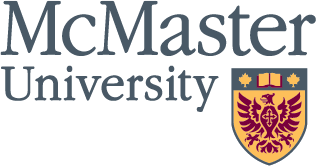‘Microplastics everywhere we look’ — Great Lakes watchdog calls for Canada and U.S. to act

High levels of microplastic particles require coordinated regional monitoring and further research, the International Joint Commission’s Science Advisory Board reports.
BY Michelle Donovan
February 11, 2025
Scientists advising a cross-border organization that reports on Great Lakes water quality are calling on the U.S. and Canadian governments to designate microplastics a Chemical of Mutual Concern under the Great Lakes Water Quality Agreement, and improve monitoring and risk assessment for them.
Microplastics, measuring under 5 millimetres in length — or smaller than a pencil eraser — are considered a pervasive problem in the Great Lakes. They enter lakes and rivers from a variety of sources, including tire wear, construction sites, fertilizers, cosmetics, laundering synthetic clothing, and, of course, litter.
The Science Advisory Board of the International Joint Commission recently released a report urging wide monitoring of the Great Lakes.
Microplastic particles are a persistent environmental contaminant that needs coordinated monitoring and further research, says McMaster biologist and report co-author Karen Kidd, who is on the Science Advisory Board of the IJC.

“We find microplastics everywhere we look, from the open waters of the Great Lakes to rivers flowing into the lakes, to fish and aquatic insects that live in these habitats,” says Kidd, who holds the Jarislowsky Chair in Environment and Health in the department of Biology.
She and her students have studied microplastics in rivers in southern Ontario since 2019.
Bigger plastics break down into progressively smaller fragments, she explains, eventually becoming microplastics, which are easily consumed by fish and the creatures they prey upon.
They can accumulate in aquatic species, impacting their survival, growth and ability to reproduce. These tiny pieces of plastic are very persistent in the environment, taking decades to break down, and are much more common in areas with lots of people.
There are also concerns that microplastics may pose a health risk to humans, who consume water and fish from the Great Lakes. Researchers in other regions are finding them in different tissues of the human body. The report recommends a follow-up study on microplastics exposure and risks to humans in the Great Lakes basin.
Kidd and many other experts are calling for additional policies to reduce plastic production and consumption, as over half of the plastics in current use go to landfills or become litter and their production from fossil fuels contributes to global climate change.
She suggests individuals can make a difference through simple measures, such as avoiding single-use plastic products and installing filters on washing machines and dryers to capture plastic fibres released from clothing.
“It is much more expensive to clean up the Great Lakes than it is to prevent pollution in the first place,” Kidd says.
Karen Kidd is participating in a one-hour public online panel discussion on Wednesday, Feb 12, starting at 1 p.m. Click here for more information or to register for this free event.
Kidd’s research on microplastics is funded in part by the Jarislowsky Foundation and NSERC.


